#1 Birth Defects Virus in Childcare Centers: CMV book reduces spread
CMV, a virus far more threatening to newborns than Zika, causes 4,000 disabled newborns each year in the U.S.
I helped Connecticut pass a CMV law in 2015 and have just come out with the book, "Help Childcare Providers Fight CMV," to protect the unborn children of mothers who use childcare services as well as the unborn children of those who provide the childcare. I am a former licensed childcare provider and mother of a toddler who was unaware of my increased risk for CMV and what to do about it.
"Help Childcare Providers Fight CMV" retails for $6.99. If you prefer, you can download my 133-page manuscript by clicking here. I have also created a PowerPoint for those who work in childcare.
Please see my following press release.
Thanks!
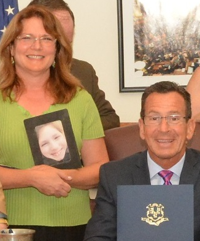 |
Lisa Saunders
CMV Awareness Advocate, Parent Rep., Congenital Cytomegalovirus Foundation |
IMMEDIATE RELEASE
Childcare Providers Unaware of Occupational Risk for CMV: #1 Birth Defects Virus
"Help Childcare Providers Fight CMV" by Lisa Saunders, former licensed childcare provider and mother of daughter born disabled by congenital CMV
Includes lyrics to new song, "Had I Known (about CMV)" © 2018 DebraSong Publishing
Mystic, Conn.--Childcare providers are largely unaware they have an occupational risk for cytomegalovirus (CMV), the leading viral cause of birth defects, which disables 4,000 newborns each year in the U.S. Mothers of children in group care are also at increased risk for CMV. Many women use diaper wipes to remove a young child's bodily fluids from hands and surfaces, but diaper wipes do not kill CMV.
Former licensed childcare provider Lisa Saunders wrote "Help Childcare Providers Fight CMV" because she didn't find out about CMV until after her daughter Elizabeth was born severely disabled by congenital (present at birth) CMV. "Most pregnant women know to avoid dirty kitty litter and mosquito bites to protect their unborn babies from disabilities caused by infections," says Saunders. "Very few, however, know how to prevent CMV, which causes more disabilities than Zika or fetal alcohol syndrome."
According to the Centers for Disease Control and Prevention (CDC), "People who care for or work closely with young children may be at greater risk of CMV infection than other people because CMV infection is common among young children." The American Academy of Pediatrics (AAP) recommends that caregivers/teachers be counseled about CMV by their healthcare providers and daycare center directors, however most childcare providers have never heard of CMV.
At the time of her pregnancy with Elizabeth, Saunders was a licensed home childcare provider, a volunteer in her church nursery, and the mother of a toddler—all things that put her at increased risk for CMV. She says, "When Elizabeth was born in 1989, I felt a stab of fear. My immediate thought was, 'Her head looks so small—so deformed.' After a CAT scan, the neonatologist said, 'Your daughter has microcephaly—her brain is very small with calcium deposits throughout. If she lives, she will never roll over, sit up, or feed herself.' Further tests revealed Elizabeth's birth defects were caused by congenital CMV."
When Saunders was then given information about CMV, she literally couldn't see straight when she read childcare providers were at increased risk. She says, "I was stunned. How could it be that no one in the medical or childcare field warned me of this? Nowhere in my childcare licensing or church nursery training was CMV mentioned. CMV prevention was not discussed in my prenatal doctor visits."
Saunders dedicated her book, "Help Childcare Providers Fight CMV," to mothers who find out about CMV too late to prevent hearing loss and/or mental and physical impairments in their newborns. The Dedication includes the lyrics to the new song, "Had I Known," by Debra Lynn Alt of North Branford, which conveys how a mother feels when she learns she could have reduced her chances of contracting CMV.
"Help Childcare Providers Fight CMV" begins with the story of four childcare providers unaware of CMV until it was too late (read excerpt by clicking "Had I Known"), and continues with chapters on why the public is largely unaware of CMV, 15 reasons why childcare providers should be educated about CMV and what they need to know to protect their unborn children. For example, the CDC states, "Women may be able to lessen their risk of getting CMV by reducing contact with saliva and urine from babies and young children. Some ways to do this are: kissing children on the cheek or head rather than the lips, and washing hands after changing diapers.” The book provides a toolkit of resources to educate childcare providers about CMV with a sample protocol and links to public health flyers such as CDC's CMV prevention tips at: https://www.cdc.gov/cmv/
Saunders says that if people don't have time to read "Help Childcare Providers Fight CMV," she wants the public to know the following:
Saunders says, "According to the Occupational Safety and Health Administration (OSHA), it is a worker's right to know occupational hazards. Of course I also believe it is every woman's right to know how to protect her unborn children from CMV."
Lack of CMV awareness is due in part to low media coverage according to HealthNewsReview.org in "Why does CMV get so much less news coverage than Zika — despite causing far more birth defects?" (Shipman, 2018). This silence is a real problem in regard to prevention, diagnosis and treatment.
Former licensed childcare provider Lisa Saunders wrote "Help Childcare Providers Fight CMV" because she didn't find out about CMV until after her daughter Elizabeth was born severely disabled by congenital (present at birth) CMV. "Most pregnant women know to avoid dirty kitty litter and mosquito bites to protect their unborn babies from disabilities caused by infections," says Saunders. "Very few, however, know how to prevent CMV, which causes more disabilities than Zika or fetal alcohol syndrome."
According to the Centers for Disease Control and Prevention (CDC), "People who care for or work closely with young children may be at greater risk of CMV infection than other people because CMV infection is common among young children." The American Academy of Pediatrics (AAP) recommends that caregivers/teachers be counseled about CMV by their healthcare providers and daycare center directors, however most childcare providers have never heard of CMV.
At the time of her pregnancy with Elizabeth, Saunders was a licensed home childcare provider, a volunteer in her church nursery, and the mother of a toddler—all things that put her at increased risk for CMV. She says, "When Elizabeth was born in 1989, I felt a stab of fear. My immediate thought was, 'Her head looks so small—so deformed.' After a CAT scan, the neonatologist said, 'Your daughter has microcephaly—her brain is very small with calcium deposits throughout. If she lives, she will never roll over, sit up, or feed herself.' Further tests revealed Elizabeth's birth defects were caused by congenital CMV."
When Saunders was then given information about CMV, she literally couldn't see straight when she read childcare providers were at increased risk. She says, "I was stunned. How could it be that no one in the medical or childcare field warned me of this? Nowhere in my childcare licensing or church nursery training was CMV mentioned. CMV prevention was not discussed in my prenatal doctor visits."
Saunders dedicated her book, "Help Childcare Providers Fight CMV," to mothers who find out about CMV too late to prevent hearing loss and/or mental and physical impairments in their newborns. The Dedication includes the lyrics to the new song, "Had I Known," by Debra Lynn Alt of North Branford, which conveys how a mother feels when she learns she could have reduced her chances of contracting CMV.
"Help Childcare Providers Fight CMV" begins with the story of four childcare providers unaware of CMV until it was too late (read excerpt by clicking "Had I Known"), and continues with chapters on why the public is largely unaware of CMV, 15 reasons why childcare providers should be educated about CMV and what they need to know to protect their unborn children. For example, the CDC states, "Women may be able to lessen their risk of getting CMV by reducing contact with saliva and urine from babies and young children. Some ways to do this are: kissing children on the cheek or head rather than the lips, and washing hands after changing diapers.” The book provides a toolkit of resources to educate childcare providers about CMV with a sample protocol and links to public health flyers such as CDC's CMV prevention tips at: https://www.cdc.gov/cmv/
Saunders says that if people don't have time to read "Help Childcare Providers Fight CMV," she wants the public to know the following:
Jessica Rachels of Sandpoint, Idaho, is another childcare worker uninformed of her increased risk for CMV. She says, “I believe I caught CMV due to my childcare profession. I washed my hands numerous times throughout the day—after every diaper change and before handling food. However, while caring for children at the center, I do remember being pregnant and eating snacks and lunch on the playground without washing my hands first. Even though I doubled up on the tissues when I wiped the children's noses, thinking that was enough protection since there was no sink nearby, I was wrong.” Jessica’s daughter, Natalie (or Natalie Bug as she is affectionately called), was born disabled by congenital CMV in 2006.
- Caregivers of young children are at increased risk for CMV, the leading birth defects virus that disables 4,000 babies each year in the U.S. (CDC).
- 44 - 100% of two-year-olds in group daycare are excreting CMV (Pass et al., 1986).
- Diaper wipes do not kill CMV (Stowella et al., 2014 ).
- 8 - 20% of childcare providers contract CMV infection every year (AAP et al., 2011) VERSUS 1-4% in general population (CDC).
- Mothers of children in group care are also at increased risk for CMV (Pass et al., 1986).
- Only 18.5% of licensed “in-home” daycare providers surveyed have heard of CMV and “Providers do not know how to appropriately sanitize surfaces to reduce spread of disease.” Many use diaper wipes to clean surfaces, which do not sanitize (Thackeray et al., 2016).
Saunders says, "According to the Occupational Safety and Health Administration (OSHA), it is a worker's right to know occupational hazards. Of course I also believe it is every woman's right to know how to protect her unborn children from CMV."
Lack of CMV awareness is due in part to low media coverage according to HealthNewsReview.org in "Why does CMV get so much less news coverage than Zika — despite causing far more birth defects?" (Shipman, 2018). This silence is a real problem in regard to prevention, diagnosis and treatment.
"Studies have shown that women who know they are CMV seronegative, know they are pregnant, and know about their toddler's CMV shedding are the most likely to prevent CMV transmission and reduce their risk from over 50 percent during pregnancy to a risk of less than 5 percent during pregnancy,” says Gail J. Demmler-Harrison, MD., Director, Congenital CMV Disease Research, Clinic and Registry.
To learn more, contact Lisa Saunders at LisaSaunders42@gmail.com or visit it her at www.authorlisasaunders.com
###
Help Childcare Providers Fight CMV: Protect Newborns from #1 Birth Defects Virus
Authored by Lisa Saunders, Illustrated by Marianne Greiner
Product details
- Retails: $6.99
- Paperback: 134 pages
- Publisher: CreateSpace Independent Publishing Platform (February 13, 2018)
- Language: English
- ISBN-10: 1984328697
- ISBN-13: 978-1984328694
- Product Dimensions: 6 x 0.3 x 9 inches
About Lisa Saunders: Lisa Saunders, a former licensed childcare provider and graduate of Cornell University, was instrumental in helping Connecticut pass a CMV testing law in 2015. She is the parent representative of the Congenital Cytomegalovirus Foundation, an award-winning writer, and SEC-TV talk show host living in Mystic, Connecticut, with her husband, Jim, and hound, Doolittle. She is the content coordinator for the magazine, Groton-Mystic Neighbors, author of 10 books, and a part-time history interpreter at Mystic Seaport. Lisa writes extensively about congenital CMV in her books and through articles such as "The Danger of Spreading CMV: How We Can Protect Our Children" (ChildCare Aware of America, 2017). Lisa's CMV-related books include:
Lisa’s work on Connecticut's new CMV law was featured in Cornell Alumni Magazine, Connecticut Magazine, and several other media outlets. Visit Lisa at www.authorlisasaunders.com
About Singer/Songwriter Debra Lynn Alt:
Debra Lynn Alt, a former lead singer for the Rolling Stone Magazine House Band, lives in North Branfored, Connecticut, and writes songs for causes and books that celebrate life—no matter where the journey leads. To hear Debra's music or read her work, visit her at debrasong.com
Congenital CMV Disease Research, Clinic & Registry
Gail J Demmler-Harrison, MD, Professor, Pediatrics, Section Infectious Diseases, Baylor College of Medicine, Attending Physician, Infectious Diseases Service, Texas Children's Hospital, CMV Registry, CMV Research and CMV Clinic. The CMV Registry supports CMV research, disseminates information and provides parent support. Visit: https://www.bcm.edu/departments/pediatrics/sections-divisions-centers/cmvregistry and Dr. Demmler-Harrison’s blog at: http://www.texaschildrensblog.org/author/gdemmler/
Contact: cmv@bcm.edu. Information available in Spanish.


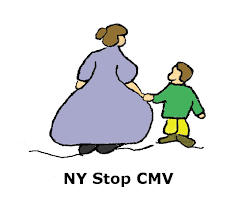


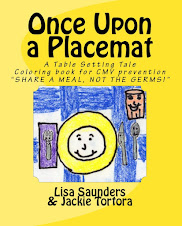

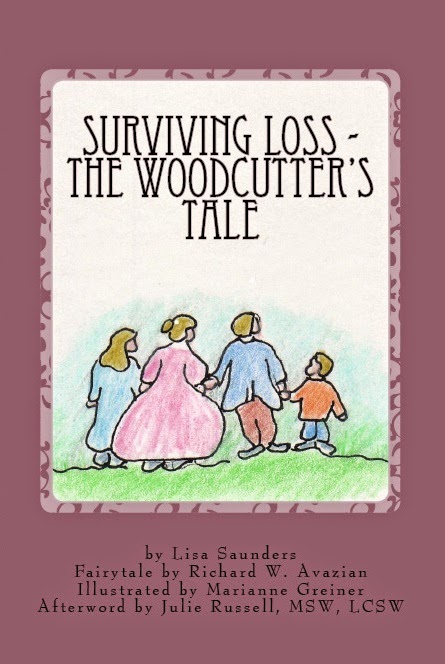

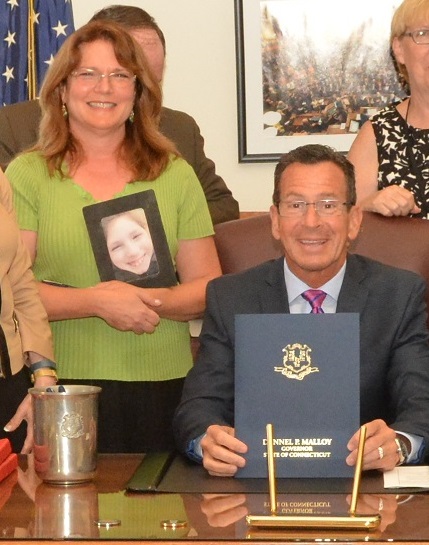
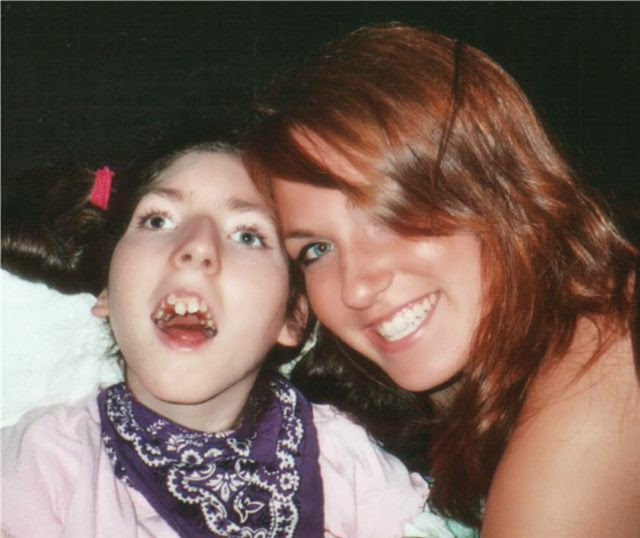
No comments:
Post a Comment